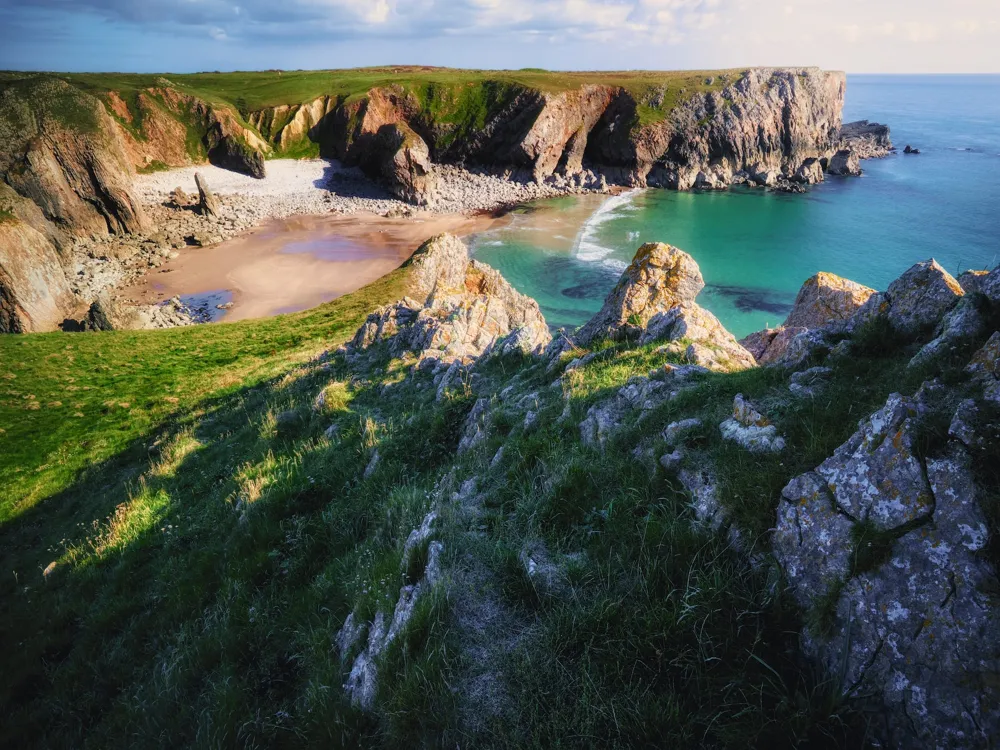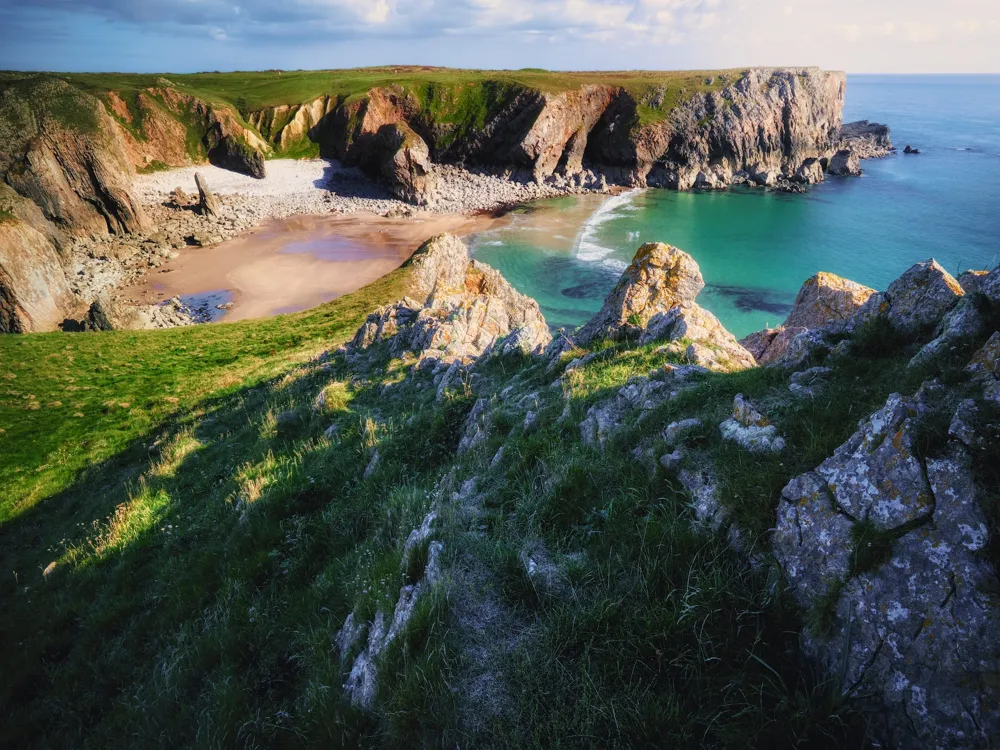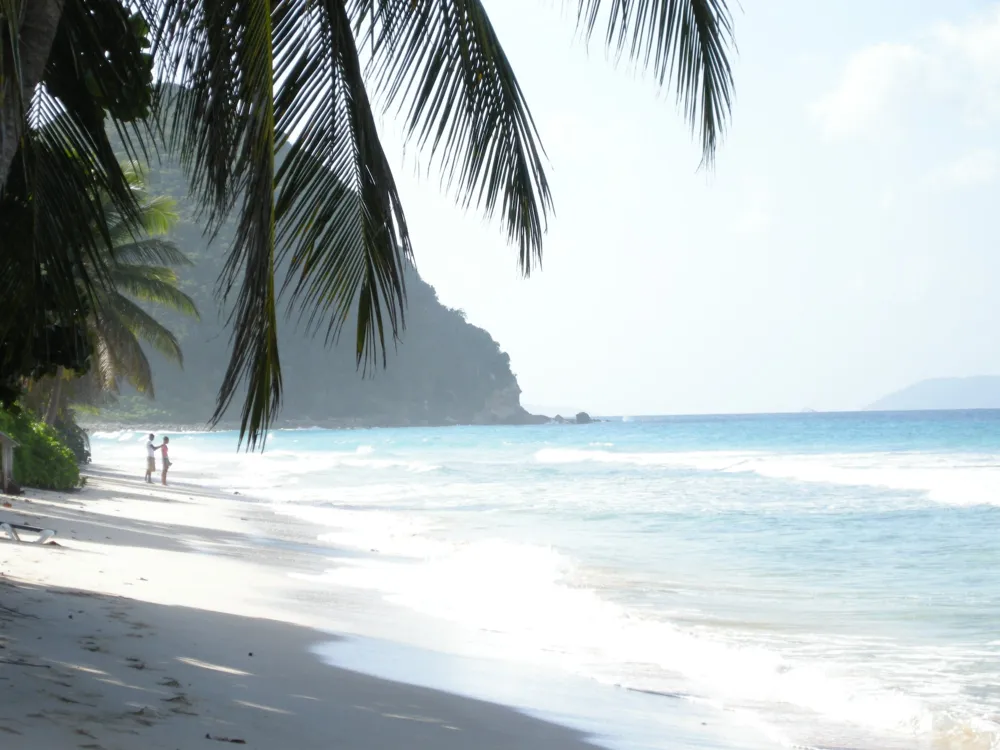Halong Bay, a UNESCO World Heritage Site since 1994, is one of the most breathtaking natural wonders in Vietnam. Located in the Gulf of Tonkin, the bay is known for its emerald waters and thousands of towering limestone islands topped with rainforests. The name 'Halong' translates to 'where the dragon descends into the sea', and local legend suggests that these islands were created by a great dragon. This natural marvel spans an area of around 1,553 square kilometers and houses approximately 1,960–2,000 islets. The beauty of Halong Bay isn't just limited to its geological formations. The area is also rich in biodiversity, with tropical evergreen, oceanic and seashore biosystems. Visitors can spot many species of birds, benthic animals, and plants. The bay also supports local communities that have lived and worked on the sea for centuries, preserving ancient cultural traditions. Exploring Halong Bay is like stepping into a landscape painting. The surrealistic scenery has inspired countless artists, poets, and photographers throughout the years. Whether it’s the mystical caves and grottoes, the floating villages, or the panoramic views from the islands’ peaks, Halong Bay offers a world of exploration and awe. The formation of Halong Bay dates back about 500 million years, with various geological changes occurring over time. The bay is made primarily of limestone, which has gone through various stages of development forming karst landscapes. Over millions of years, the combination of environment, climate, and geological conditions has resulted in this unique landscape. The local culture in Halong Bay is deeply intertwined with the sea. Communities here have been living on boats and floating houses for generations, relying on fishing and aquaculture for livelihood. These floating villages are not just homes; they are ecosystems in themselves, with schools, markets, and cultural centers all adapted to the aquatic environment. The legend of Halong Bay is as enchanting as its landscape. According to local folklore, the bay was formed by a dragon who descended from the mountains, carving valleys and crevasses with its flailing tail. As the dragon plunged into the sea, the area was flooded, leaving only the pinnacles visible. The architecture of Halong Bay is not about human-made structures, but rather the awe-inspiring natural formations that have stood the test of time. The bay's iconic limestone karsts and islands come in various shapes and sizes, each telling a unique geological story. The diverse range of caves, grottoes, and arches add to the architectural marvels of the area. Among the most fascinating aspects of Halong Bay's natural architecture are its caves and grottoes. These include Sung Sot Cave, Dau Go Cave, and Thien Cung Cave, each with their own unique formations and histories. Stalagmites and stalactites create natural art pieces, with light and shadows playing off the walls to create a magical atmosphere. The islands themselves are architectural masterpieces. From the famous Fighting Cocks (Trong Mai) islets to the shape of a man’s face in Bo Hon Island, each formation has its own legend and local lore. These limestone structures have undergone centuries of weathering and erosion, sculpting them into the fascinating shapes seen today. Biological diversity also plays a crucial role in the architecture of Halong Bay. The varied ecosystems on the islands, including mangrove forests, coral reefs, and tropical forests, contribute to the overall beauty and uniqueness of the bay. This biodiversity not only adds to the visual splendor but also supports a wide range of marine and terrestrial life. Plan your trip between October and April for the best weather. Avoid the rainy season from May to September, as storms can disrupt tours. Select a reputable cruise company for safety and the best experience. Consider the duration, route, and activities offered. Be mindful of local customs and traditions. Support local communities by purchasing local products and services. Bring light and comfortable clothing, sun protection, and motion sickness medication if needed. Waterproof bags are recommended for electronic devices. Reaching Halong Bay is convenient from major cities in Vietnam. The nearest airport is Cat Bi International Airport in Hai Phong, about an hour's drive from the bay. Visitors can also travel from Hanoi, which is about 170 kilometers away, by bus, private car, or shuttle. For a scenic route, consider taking a seaplane from Hanoi for breathtaking aerial views of the bay.Overview of Halong Bay
Geological Significance
Local Culture and Lifestyle
Myth and Folklore
Architecture of Halong Bay
Natural Caves and Grottoes
Island Formations
Biological Diversity in Architecture
Tips When Visiting Halong Bay
Best Time to Visit
Choosing a Cruise
Respecting Local Culture
Packing Essentials
How To Reach Halong Bay
Dragon Park Ha Long
Halong Bay
₹ 15,260 onwards
View halong-bay Packages
Halong-bay Travel Packages
View All Packages For Halong-bay
Top Hotel Collections for Halong-bay

Private Pool

Luxury Hotels

5-Star Hotels

Pet Friendly
Top Hotels Near Halong-bay
Other Top Ranking Places In Halong-bay
View All Places To Visit In halong-bay
View halong-bay Packages
Halong-bay Travel Packages
View All Packages For Halong-bay
Top Hotel Collections for Halong-bay

Private Pool

Luxury Hotels

5-Star Hotels

Pet Friendly






















